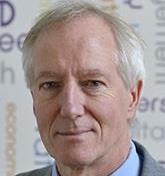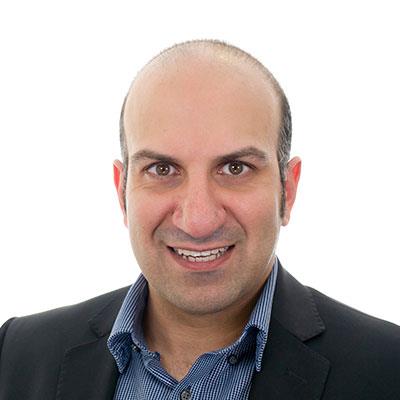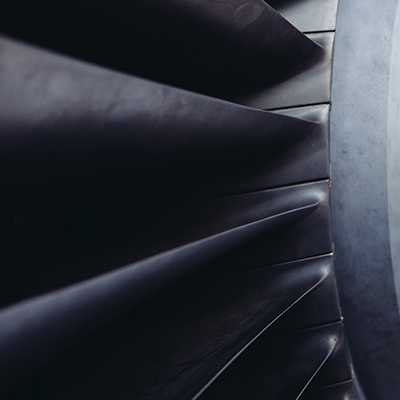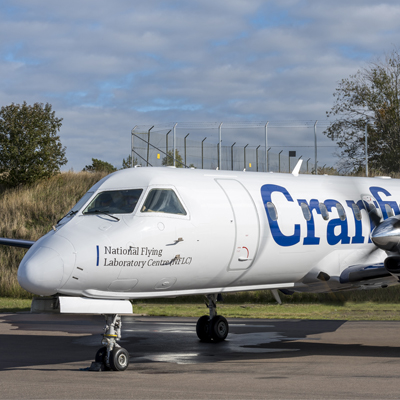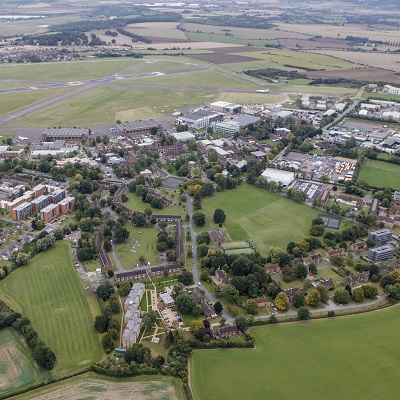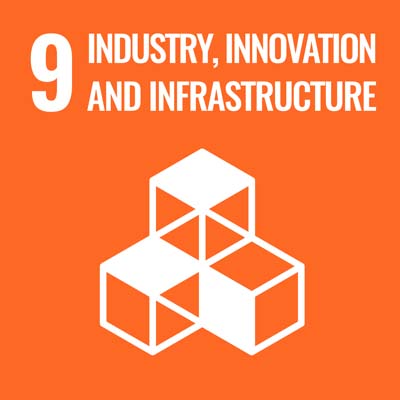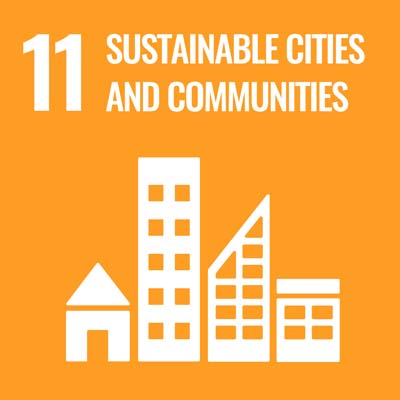Overview
- Start dateMarch or October
- DurationFull-time MSc: one year; PgDip: up to one year
- DeliveryTaught modules 50%, individual research project 50%
- QualificationMSc, PgDip
- Study typeFull-time
- CampusCranfield campus
Who is it for?
This course is suitable for graduates seeking a challenging and rewarding career in an growing international industry. Graduates are provided with the skills that allow them to deliver immediate benefits in a very demanding and rewarding workplace and therefore are in great demand.
Why this course?
The MSc option in Power, Propulsion and the Environment is structured to enable you to pursue your own specific interests and career aspirations. You may choose from a wide range of modules and select an appropriate research project. An intensive industrial management course is offered which assists in achieving exemptions from some engineering council requirements. You will receive a thorough grounding in the operation of different types of rotating machinery for aeronautical, marine and industrial applications plus environmental management.
We have been at the forefront of postgraduate education in thermal power and gas turbine technology at Cranfield since 1946. We have a global reputation for our advanced postgraduate education, extensive research and applied continuing professional development.
This MSc programme benefits from a wide range of cultural backgrounds which significantly enhances the learning experience for both staff and students.
Informed by industry
Our industry partners help support our students in a number of ways - through guest lectures, awarding student prizes, recruiting course graduates and ensuring course content remains relevant to leading employers.
The Industrial Advisory Panel meets annually to maintain course relevancy and ensure that graduates are equipped with the skills and knowledge required by leading employers. Knowledge gained from our extensive research and consultancy activity is also constantly fed back into the MSc programme. The Thermal Power and Propulsion MSc Industrial Advisory Panel comprises senior engineers from companies such as:
- EasyJet,
- EASA,
- RMC,
- Rolls-Royce,
- Senior Consultant,
- Uniper Technologies.
Course details
The course is comprised of up to 12 taught modules, depending on the course option chosen. Modules for each option vary; please see individual descriptions for compulsory modules which must be undertaken. There is also an opportunity to choose from an extensive choice of optional modules to match specific interests.
Course delivery
Taught modules 50%, individual research project 50%
Individual project
You are required to submit a written thesis describing an individual research project carried out during the course. Many individual research projects have been carried out with industrial sponsorship, and have often resulted in publication in international journals and symposium papers. This thesis is examined orally in September in the presence of an external examiner.
Previous individual research projects have included:
- Benchmark of methods to measure the density of atmospheric ice,
- Green runway: investigation of emissions and noise for large aircraft operation within an airport,
- Techno economic environmental risk assessment on marine propulsion.
Modules
Keeping our courses up-to-date and current requires constant innovation and change. The modules we offer reflect the needs of business and industry and the research interests of our staff and, as a result, may change or be withdrawn due to research developments, legislation changes or for a variety of other reasons. Changes may also be designed to improve the student learning experience or to respond to feedback from students, external examiners, accreditation bodies and industrial advisory panels.
To give you a taster, we have listed the compulsory and elective (where applicable) modules which are currently affiliated with this course. All modules are indicative only, and may be subject to change for your year of entry.
Course modules
Compulsory modules
All the modules in the following list need to be taken as part of this course.
Gas Turbine Performance, Simulation and Diagnostics
| Aim |
To inform you of the different types of gas turbine engines; their applications, on-design, off-design and transient performance. To provide you with the ability to undertake gas turbine component performance calculations, diagnostics and to perform evaluations of gas turbine performance, and deterioration. |
|---|---|
| Syllabus |
Gas Turbine Types and Applications Effect of design parameters such as pressure ratio and turbine temperature on the basic gas turbine cycle. Modifications of the basic Brayton cycle, compounding, intercooling, reheating, heat exchange, bypass, and fan cycles. Simulation of the above. Performance and Simulation Design point performance of turbojet, turbofan and turboshaft cycles, effect of bypass ratio. Off design performance, effect of ambient temperature, altitude, throttle setting and flight speed. Non-dimensional representation. Gas turbine simulation. Effects of bleeds and power offtakes. Compressor turbine matching. Gas turbine degradation. Simulation and diagnostics of the above. Component maps. Surge alleviation, performance improvements, steady-state, and transient performance. Off-design performance calculations and iteration techniques Accelerations, decelerations, effects on surge margin. Transients of single shaft and multi-shaft engines. Transient performance simulation. Effects of heat transfer on transient performance. Software used for gas turbine performance simulation: TURBOMATCH Diagnostics and Monitoring. Description of gas turbine performance degradation and faults. Description of most used gas turbine condition monitoring techniques. Software used for diagnostics: PYTHIA |
| Intended learning outcomes |
On successful completion of this module you should be able to:
|
Turbomachinery and Blade Cooling
| Aim |
To familiarise you with compressor and turbine aerodynamic design and performance by instruction, investigation and example. To introduce you to the technology of gas turbine blade cooling through analytical and practical approaches of heat transfer principles, convection cooling, impingement film transpiration cooling and liquid cooling. |
|---|---|
| Syllabus |
Thermofluids: Introduction to aerodynamics, thermofluids, and compressible flows. Compressor Design and Performance Overall performance: Fundamentals of axial flow compressors. Overall performance, achievable pressure ratio and efficiency. The effect of Reynolds number, Mach number, and incidence. Definition of isentropic and polytropic efficiency, effect of pressure ratio, performance at constant speed, surge and surge margin definitions, running line, choking effects. The axial compressor stage: Stage loading and flow parameters, limitation in design on pitch line basis. Definition and choice of reaction at design, effect on stage efficiency. Loss sources in turbomachines and loss estimation methods. The ideal and real stage characteristic, stall and choke. The free vortex solution, limitations due to hub/tip ratio. Off-design performance Choice of overall annulus geometry, axial spacing, aspect ratio, limitations of rear hub/tip ratio. Compressor blading: selection of blade numbers, aspect ratio and basic blade profiling. Compressor design example: Multi-stage compressor design example carried out for a HPC. Turbine Design and Performance Overall performance: the expansion process and characteristics, annulus layout and design choices, choice of stage loading and flow coefficient, engine overall performance requirements, overall annulus geometry and layout; rising line, constant mean diameter and falling line. The axial turbine stage: Aerodynamic concepts and parameters, velocity triangles, reaction, stage loading, flow coefficients. The ideal and real characteristic. Design for maximum power: effect of choking and change of inlet temperature and pressure. Stage efficiency, overtip leakage, profile losses, correlations. Three-dimensional design aspects. Radial equilibrium and secondary flows. Turbine blading: choice of base profile, blade numbers and aspect ratio. Zweiffel's and alternative lift coefficients. Turbine Design Example: An aerodynamic design example is carried out for a HPT Heat Transfer Principles: Brief review of heat transfer principles and physical significance of non-dimensional groupings. Conditions around blades, boundary layers, external heat transfer coefficient distribution, effect of turbulence. Root cooled blades and NGVs, analytical and numerical methods of determining spanwise temperature distribution. Fibre strengthened and nickel base alloys. Need for high turbine entry temperature: effect on engine performance. Development of materials, manufacturing processes and cooling systems. Convection Cooling: Convectively cooled aerofoils: analytical approach for metal and cooling air spanwise temperature distribution. Cooling passage geometry and heat transfer characteristics. Cooling efficiency, cooling effectiveness and mass flow function: application at project design stage for determining metal and cooling air temperatures. Methods for optimising cooling system design: secondary surfaces and multipass. Internal temperature distribution of cooled aerofoils: calculations, comparisons with experimental results. Impingement, Film and Transpiration Cooling: Principles steady state and transient performance, characteristics, advantages, limitations, comparison with convection cooling. Cooling air feed and discharge systems. Integration of cooled turbine with aerodynamic performance and main engine design. Co-ordination of design responsibilities. Example of cooled turbine stage design. Liquid Cooling: Liquid cooling: principles, advantages and limitations, practical examples. |
| Intended learning outcomes |
On successful completion of this module you should be able to:
|
Combustors
| Aim |
|
|---|---|
| Syllabus |
Introduction to GT combustor design considerations and sizing methodologies: Diffusion and pre-mixed flame characteristics; GT combustor design features and performance requirements; Design considerations and main functions of the primary, intermediate and dilution zones; Fundamental aspects of the ignition process; Sources of pressure loss; Performance criteria and requirements for pre-combustor diffusers; Faired and dump diffusers; Combustor sizing methodologies based on the pressure loss approach, combustor efficiency requirements and altitude relight requirements. Combustion efficiency: Definition of combustion efficiency and combustion efficiency requirements; Evaporation rate controlled systems – influence of fuel type, turbulence and pressure, drop size and residence time; Mixing rate controlled systems; Reaction rate controlled systems – derivation and significance of the theta parameter. Overview of GT generated pollutants: Products of combustion and their consequences; Mechanisms of formation of GT pollutants; Effects on the environment and/or human health; Overview of limitation strategies and associated challenges; Low emissions combustion systems for aero and stationary gas turbines; Emissions legislation and targets. GT combustor heat transfer and cooling: Combustor buckling and cracking; Need for efficient methods of liner cooling; Heat transfer processes (Internal and external radiation, internal and external convection, conduction); Calculation of uncooled liner temperature; Effect of chamber variables on heat transfer terms, liner wall temperature and liner life; Film cooling techniques; Advanced wall cooling techniques; Combustor liner materials and thermal barrier coatings. GT fuels Appraise types and properties of fuels; Methodologies to calculate combustion temperatures for various fuel types, mixture strengths and pressures (both non-dissociated and dissociated). Computational methods for GT Combustors Role of CFD in combustor design and development; Application of CFD for preliminary design, prognostics and diagnostics of combustion systems. Introduction to GT afterburners: Requirement and principle of afterburning; Effects of afterburning on engine performance; General arrangement, main components and design features of afterburners; Ignition methods for GT afterburners; Control requirements and methods for engines with afterburners; Considerations for selection of convergent and convergent-divergent nozzles. |
| Intended learning outcomes |
On successful competition of this module you should be able to:
|
Engine Systems
| Aim |
|
|---|---|
| Syllabus |
Assessments of engine systems, auxiliaries, families of engines, and/or engine and component designs for both aero and stationary gas turbines are addressed by means of a 'Systems Symposium', run by the MSc class. Topics covered by the systems symposium include: intake systems for aero engines and industrial gas turbines; anti-icing systems for aeroengines and industrial gas turbines; start systems for aeroengines and industrial gas turbines; start sequences for industrial gas turbines; compressor bleed and variable guide vanes; variable geometry nozzle guide vanes; gas path sealing of aero gas turbines; noise control of gas turbines; air filtration for industrial gas turbines; compressor and turbine cleaning systems; full authority and other electronic control systems; key gas turbine component design technologies, etc. Topics may also cover design technologies of gas turbine engines and their components, different families of engine products of major gas turbine manufacturers in different countries, comparison of competitive engines, etc. The objective is to undertake an evaluation of a specified aspect of gas turbine engineering, to make a presentation and to provide a technical review paper or design and assessment on a particular subject. Another aspect of the module is that the presentations are made in a conference format which requires you to work together to plan, organise and execute the events. Outline syllabus for a few sample individual topics: |
| Intended learning outcomes |
On successful completion of this module you should be able to:
|
Management for Technology
| Aim |
The importance of technology leadership in driving the technical aspects of an organisation’s products, innovation, programmes, operations and strategy is paramount, especially in today’s turbulent commercial environment with its unprecedented pace of technological development. Demand for ever more complex products and services has become the norm. The challenge for today’s manager is to deal with uncertainty, to allow technological innovation and change to flourish but also to remain within planned parameters of performance. Many organisations engaged with technological innovation struggle to find engineers with the right skills. Specifically, engineers have extensive subject/discipline knowledge but may benefit from developing a deeper understanding of management processes in an organisational context. |
|---|---|
| Syllabus |
• People management: Understanding you. Understanding other people. Working in teams. Dealing with conflicts. • The Business Environment: Understanding the business environment; identifying key trends and their implications for the organisation. • Strategy and Marketing: Developing effective strategies; Focusing on the customer; building competitive advantage; The role of strategic assets. • Finance: Profit and loss accounts. Balance sheets. Cash flow forecasting. Project appraisal. • New product development: Commercialising technology. Market drivers. Time to market. Focusing technology. Concerns. • Business game: Working in teams (companies), students will set up and run a technology company and make decisions on investment, R&D funding, operations, marketing and sales strategy. • Negotiation: Preparation for Negotiations. Negotiation process. Win-Win solutions. • Presentation skills: Understanding your audience. Focusing your message. Successful presentations. Getting your message across. |
| Intended learning outcomes |
On successful completion of this module you should be able to:
|
Gas Turbine Operations and Rotating Machines
| Aim |
|
|---|---|
| Syllabus |
Gas Turbine Operations: Steam Turbine Operations: Diesel Engines for Heat and Power: |
| Intended learning outcomes |
On successful completion of this module you should be able to:
|
Elective modules
One of the modules from the following list needs to be taken as part of this course.
Computational Fluid Dynamics for Gas Turbines
| Aim |
To introduce you to computationally-based flow modelling, applicable to turbomachinery components and gas turbine engines. To introduce you to the theoretical background of Computational Fluid Dynamics and to the limitations of CFD when applied to the solution of turbomachinery fluid flow problems. To provide experience in the use of a commercial CFD code through planning and conducting investigations of complex turbomachinery flow cases. |
|---|---|
| Syllabus |
Introduction to computational fluid dynamics and the role of CFD in engine component evaluation and improved design. Review of current capabilities and future directions. Physical Modelling Governing Navier-Stokes equations. Approximate forms. Turbulence - turbulent averaging, mathematical closure and turbulence modelling. Scalar transport and chemical reaction. Reynolds averaging, Large Eddy Simulation, Direct Numerical Simulation. Finite Difference Equations Problem classification. Discretisation. Solution methods. Pressure correction. Boundary conditions. Mesh generation for practical flow geometries. Practical Demonstration Introduction to commercially available general purpose CFD codes (FLUENT and CFX). Case study tutorials and assessed assignment. |
| Intended learning outcomes |
On successful completion of this module a you should be able to:
|
Jet Engine Control
| Aim |
This module aims to introduce you to aircraft engine control and to explain the philosophy of jet engine control requirements and systems to gas turbine engineers. |
|---|---|
| Syllabus |
The difficulty of compressing air; the overall compressor characteristic and its graphical presentation. Running line and surge line. Performance limitations at low rotational speed and low airflow. Design for surge alleviation. The use of variable inlet guide vanes, variable stators, air bleed, multi-spooling. Axial turbine performance Physics of expanding gas flows and choking. Performance at maximum flow. Effect of changes in inlet temperature and pressure. The turbine overall performance characteristic and turbine efficiency. Gas turbine control Needs and Implementation. The gas turbine is a very complex mechanism that has to operate within many constraints including aerodynamic, mechanical and handling issues. At the same time it also needs to be responsive and operate safely. An explanation will be given on these constraints and how different features such as variable stators, bleed valves and variable area nozzles can be used to implement safe and responsive engine handling. An explanation on component matching and the influence of each control feature on the operation of the engine. Introduction to fuel systems and fuel pumps To include the role of the fuel system; fuel properties; typical fuel flows, temperatures, and pressures in the system, descriptions of low pressure first stage pump, high pressure second stage pumps; typical modern control systems. Airframe Fuel Systems Low Pressure Engine Fuel Systems. To include typical LP system architecture, fuel pump inlet pressure requirements, the concept of Net Positive Suction Pressure (NPSP), establishing the low pressure pump design points; low pressure first stage pump types; fundamentals of LP pump design. High pressure engine fuel pumps Difference between positive displacement and rotodynamic pumps, types of positive displacement pumps; selecting the optimum drive speed; sizing a positive displacement pump; the effect of leakage on pump size and heat rejection; mechanical design considerations; journal bearing design; pointing design and minimising cavitation erosion damage. Hydro-mechanical fuel metering Brief history of fuel control architectures leading to FADEC systems; Functions required by modern FADEC based fuel controls; impact of reliability requirements on modern fuel control architecture; modern fuel control architecture; basic principles of fuel flow; fuel metering; electrical interface devices used on modern fuel controls; engine actuation; demonstration of modern fuel control hardware; fitness for purpose, future trends in fuel control. Electronic engine control To include circuit design, mechanical design, software. Staged Combustion To include aircraft emissions, emissions legislation, controlling emissions, fuel control requirements, fuel control, control laws. Fuel controls for ‘more/all’ electric engines To include impact of the More/All electric engine on fuel control, positive displacement pump based systems, centrifugal pump based systems, technical challenges. Airworthiness considerations European and USA regulatory requirements relevant to certification and substation of engine controls and fuel systems including their installation. Service history, occurrences and case studies. |
| Intended learning outcomes |
On successful completion of this module you should be able to:
|
Marine Propulsion System Integration
| Aim |
To familiarise you with various marine propulsion technologies, propulsion auxiliary and their integration |
|---|---|
| Syllabus |
The module will be covered in the following four parts: |
| Intended learning outcomes |
On successful completion of this module you should be able to:
|
Propulsion Systems Performance and Integration
| Aim |
|
|---|---|
| Syllabus |
Aircraft Engine and Component Performance Three main topics are dealt with in this section: Aircraft Performance, Jet Engine Performance, Intakes and Exhaust Systems. • Aircraft Performance: Deals with the major topics of flight and aerodynamics, such as lift, drag, range, performance and a section on the design of aircraft for different purposes. • Jet Engine Performance: Focuses mainly on the off-design performance of jet engines. Engine behaviour at different altitudes, flight speeds, ambient conditions and throttle settings are described. This topic features a presentation on the design of engines for various types of aircraft. • Intakes and Exhaust Systems: Outlines the major design features and operation of the components for subsonic and supersonic aircraft applications. System Performance and Integration: This portion of the course starts with the analysis of fundamental aerodynamics of unducted and ducted bodies. This is followed by the development, via the formal definitions of thrust and drag and the concept of stream-tube momentum force, of the relationship between the net propulsive force of the powerplant, engine thrust and nacelle forces. Alternative performance accounting relationships are developed for various choices of thrust interface using force, drag and the hybrid force/drag method. These are employed to illustrate the interplay between component forces. The treatment addresses the long and short-cowl podded nacelles, appropriate to civil engine installations, on- and off-wing; and the highly integrated installations encountered in military aircraft. |
| Intended learning outcomes |
On successful completion of this module you should be able to:
|
Space Propulsion
| Aim |
|
|---|---|
| Syllabus |
Introduction: The interactions between propulsion system, mission & spacecraft design. Spacecraft Performance: Mission requirements, Vehicle dynamics, Tsiolkovski rocket equation, Launch vehicle sizing and multi-staging. Illustrative launcher performance (Ariane, Shuttle programmes, Falcon...). Launch site/range safety constraints, Geostationary orbit acquisition. Launch Vehicles: Current Options: Vehicle design summaries, Orbital transfer vehicles, Comparative launch costs, and Reusable launchers. Propulsion Fundamentals: Systems classification, Nozzle flows, Off-design considerations (under/over-expanded flows), Thermochemistry. Space Propulsion Systems and Performance: Propellants and combustion, Solid and liquid propellant systems, Engine cycles: Spacecraft propulsion—orbit raising, station-keeping and attitude control, Propellant management at low-g—alternative storage and delivery systems: Electric propulsion, Separately Powered rocket performance, Low thrust manoeuvres, Thruster concepts and configurations. Alternative propulsion concepts and future developments: Overview of potential alternatives to current (or common) propulsion systems and their advantages, problems, or feasibility. This includes Sails, Nuclear propulsion, Air-Breathing, Space Elevators. |
| Intended learning outcomes |
On successful completion of this module you should be able to: 1. Evaluate the constraints imposed by launch vehicle performance & operation on mission analysis. 2. Assess the impact of molecular mass, toxicity, and storability of the propellant on thruster performance and cost. 3. Design system points, off-design calculations, and mission analysis using fundamental physics relationships. 4. Critically assess the relative strengths of the principal options for propulsion systems in relation to both boosters and secondary spacecraft propulsion for a range of mission applications. 5. Estimate thruster performance using fundamental methods while appraising the limitations of the techniques. |
Teaching team
Our teaching team are active researchers as well as tutors and have extensive experience of gas turbine design, in both industrial and research and development environments. Continuing close collaboration with major engine manufacturers in both the UK and overseas, through teaching and research, ensures that this course maintains the relevance and professionalism for which it is internationally renowned. Knowledge gained working with our clients is continually fed back into the teaching programme, to ensure that you benefit from the very latest knowledge and techniques affecting industry. The Programme Director is Dr Uyioghosa Igie.
Accreditation
The Thermal Power and Propulsion MSc is accredited by Royal Aeronautical Society (RAeS) and the Institute of Mechanical Engineers (IMechE) on behalf of the Engineering Council as meeting the requirements for further learning for registration as a Chartered Engineer (CEng). Candidates must hold a CEng accredited BEng/BSc (Hons) undergraduate first degree to show that they have satisfied the educational base for CEng registration. Please note accreditation applies to the MSc award and PgDip do not meet in full the further learning requirements for registration as a Chartered Engineer.
Your career
Over 90% of the graduates of the course have found employment within the first year of completion. Many of our graduates are employed in the following industries and positions:
- Gas turbine engine manufacturers,
- Airframe manufacturers,
- Airline operators,
- Regulatory bodies,
- Aerospace/Energy consultancies,
- Power production industries,
- Academia: doctoral studies.
Cranfield’s Career Service is dedicated to helping you meet your career aspirations. You will have access to career coaching and advice, CV development, interview practice, access to hundreds of available jobs via our Symplicity platform and opportunities to meet recruiting employers at our careers fairs. Our strong reputation and links with potential employers provide you with outstanding opportunities to secure interesting jobs and develop successful careers. Support continues after graduation and as a Cranfield alumnus, you have free life-long access to a range of career resources to help you continue your education and enhance your career.
How to apply
Click on the ‘Apply now’ button below to start your online application.
See our Application guide for information on our application process and entry requirements.






